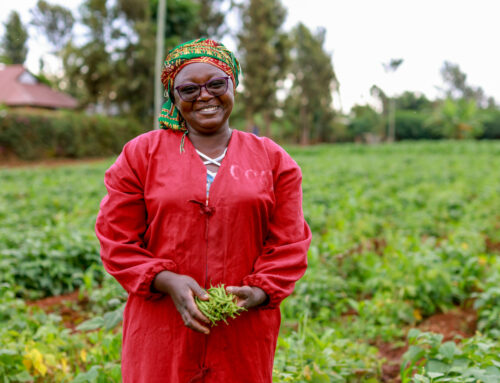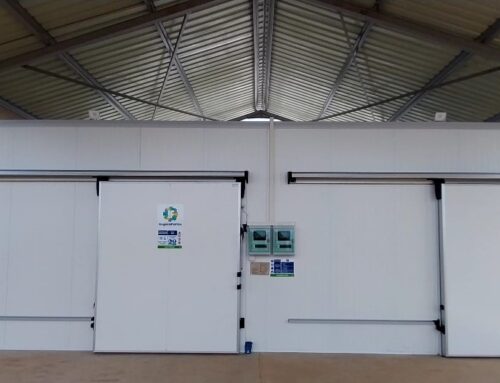Keep it cool from farm to markets: decentralizing the cold chain
AJ Munian is an agricultural value chain specialist who holds a BSc (Agric) and an MBA from UKZN in South Africa. AJ’s professional qualifications in agriculture are further strengthened by 20 years of experience across each link in the entire agriculture value chain all the way from technical production through the supply chain to FMCG/retail. He has worked for leading multinationals such as Woolworths, Capespan, and Maersk, and as well with start-ups.
1. What does first-mile distribution mean within agricultural-based food supply chains?
Essentially it represents the first link in the cold chain from when fresh produce is first picked in the field to the point when it reaches some form of cooling or chilling treatment. Once picked, most fresh produce turns into a ticking time bomb, as it has a very defined shelf-life. So the emphasis on the first mile is to find agricultural solutions which can provide the quickest and first field-level response to reduce external temperature shocks on fresh produce between the moment it is picked to the next moment when it reaches a cold-chain. Reducing temperature (and ideally controlled atmosphere adjustments) as quickly as possible contributes to extending the product shelf life. It’s important to measure the gap in time for fresh produce to reach the cold chain, and to track the temperature exposures and variances that produce has gone through.
2. What are the main challenges in first-mile distribution and logistics of fruit & vegetables?
Access to affordable, field-based cold storage infrastructure is the biggest challenge. Field-based cold storage infrastructure is usually not available for the first mile. Any cold chain is only as strong as its weakest link and with the focus on centralized cooling the first link from point of picking to the point of first cooling remains a challenge. Often fresh produce has to be transported in crates or cartons. At field level, produce is generally packed in crates, thereafter it is transferred to a trailer whilst waiting for the trailer to be filled before being transported again. On a trailer the produce is in open air for several miles before eventually going into cold storage. Frequently, produce is even left exposed to the sun for hours until all crates are filled before a truck can depart. These cumulative dwell times across these activities means that the fresh produce has experienced significant “temperature spikes” that will adversely affect all further post-harvest treatment processes.
3. How are these challenges are currently solved? what are the alternatives and what are the issues with some of them?
Currently, those farms that are able to afford conventional cold storage infrastructure usually place cold storages in centralized locations, usually closer to the farm’s head offices instead of at the points of production. This increases the time for fresh produce to reach cooling (dwell time) which will impact the post-harvest quality of produce. A centralized model currently exists because of the traditional higher cost of cooling technology. Up to now placing cooling closer to the production points has been unaffordable and with limited technology options for field-based needs.
Second-hand reefers have often been used as a substitute to provide added cooling capacity closer to the field level. However, the operational expenditure of this type of cold storage is prohibitive, mostly because of its higher energy consumption. In addition, reefers have fixed dimensions that often don’t match the different field sizes and are also structurally designed for ocean transport instead of field placement. Therefore, reefers are not a sustainable solution for decentralizing the cold chain.
4. What are the key things a first-mile distribution scheme needs to consider?
Any baseline assessment of a fresh produce supply chain must consider the amount of time it takes for fresh produce to enter the cold chain and the temperature variance experienced by the produce up to that point. Temperature spikes directly affect the respiration rates and moisture of fresh produce, and in turn, its shelf life. The starting point, then, is to measure the length of time from when the product is picked to when it finally reaches some form of cold storage or chilling, and the dwell times at each stop along that trip. The purpose of a first-mile distribution is to provide cooling as soon as possible through field-based cooling solutions which allow preservation of the fruit or vegetable’s moisture and turgidity.
5. How are demanding market logistics companies (such as exporters) dealing with first-mile distribution challenges?
A few logistics companies are trying to build smaller centers closer to production points. These companies are placing a few reefers near centralized collection points, where produce from rural production regions needs to arrive at the right temperature. The problem, however, is when the produce arrives it is mostly at too high of a temperature. In that case, the produce needs to be pre-cooled to bring the temperature down rapidly (often a 15 to 20 Celsius degree drop is required) before it can be placed in a centralized cold storage. This is difficult for reefers to handle because they have been built to maintain temperature, not to bring down the temperature.
And if the temperature of produce is dropped down too quickly the fruit can experience chilling injuries. This balancing act is a challenge which international logistics companies are reluctant to deal with due to the potential exposure to commercial product claims.
So, the main issue on first mile distribution is on how to manage the cold chain at field level before it is transported to a centralized cold storage. That is what InspiraFarms is addressing.
Additionally, other key supply chain actors, such as retailers, have strict demands on temperature management of fresh produce. Cold chain management in retail is so critical that any breakdown in the cold chain of over seven minutes can lead to rejections.
6. How are existing supply chains tackling the first-mile issue? Are there any interesting examples in South Africa?
Firstly, there is a general lack of focus on this first link on the operational post-harvest management of fresh produce. In the same way that the blockchain has been introducing a distributed ledger to improve the efficiency and transparency of transactions, innovative distributed cold chain solutions are required around the existing centralized agricultural supply chain design. Field level cold chain infrastructure solutions are required to build infrastructure which will allow for field level cold chain management.
In South Africa, SPAR is in part looking to tackle the issue in first-mile distribution by decentralizing its supply chain, establishing satellite agri-hubs with cooling capacity. By decentralizing the supply chain, the point of production can also become closer to point of sale and thereby ensure that the local community benefits from locally grown food.
To connect with AJ you can write an email to aj@smartagrisolutions.com



